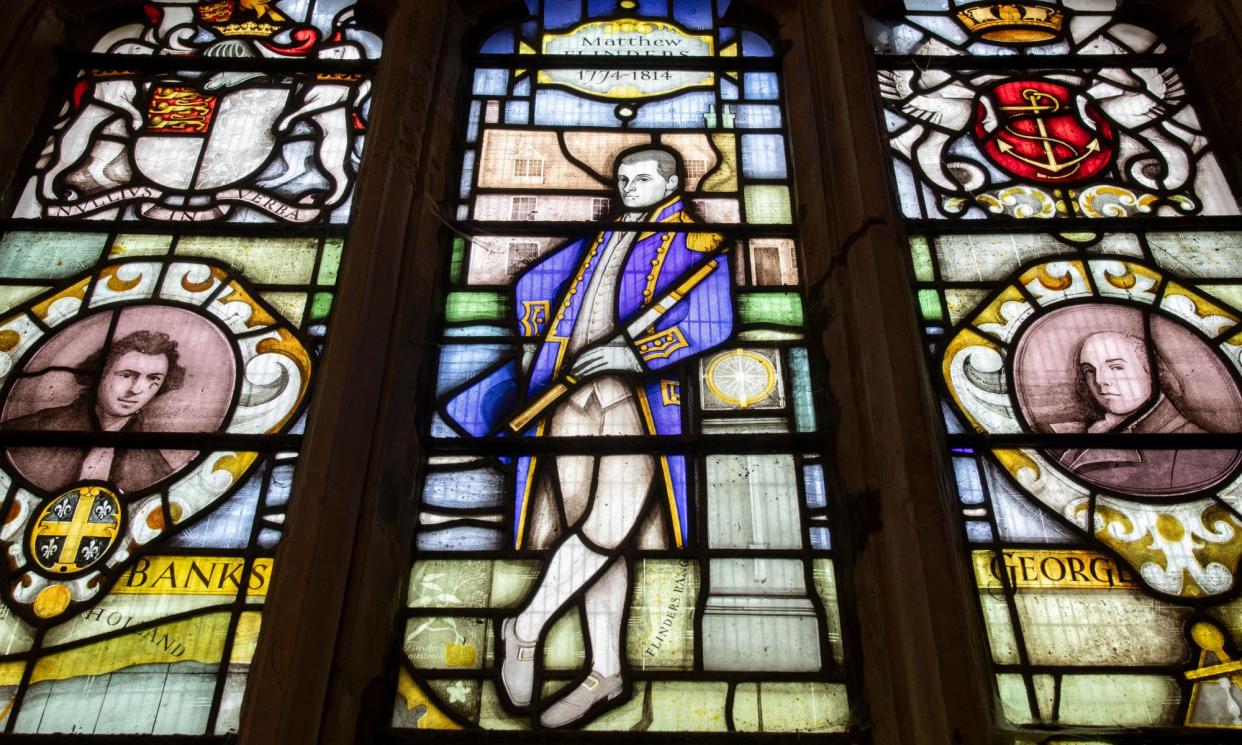Explorer ‘who named Australia’ to be reburied in Lincolnshire village where he was born

When the remains of the famous explorer Capt Matthew Flinders – credited with naming Australia – were discovered during the digging for HS2, Jane Pearson knew he had to be brought back home to Donington.
This little village in Lincolnshire, where Flinders was born in 1774, has been preparing for his arrival for months, and is gearing up to welcome a host of Australian dignitaries travelling over for his reburial in July.
“It’s a huge project. We’ ve got 400 guests coming, many from across the world. And we’ve only got one chance to get this right,” said Pearson, 72, chair of the campaign to bring back Flinders, which successfully lobbied to have him brought to the village where his father and brother are buried.
“It’s a bit mind-blowing when you actually think about it. People are coming all that way for this event, to come to Donington,” said Jane King, 63, a local councillor who has also been involved in the preparations.
“My son said to me, ‘Mum, you do realise that you’re involved in doing something that’s going to be in the history books?’ That was a bit woah, a bit scary.”
Flinders was a British navigator and cartographer who led the first circumnavigation of Australia, and discovered that Tasmania was an island. He is also credited as being the first person to use the name “Australia” to describe the continent and successfully argued for its adoption.
His health deteriorated while he was imprisoned for seven years in Mauritius by the French while travelling home, and he died in London in 1814, aged 40, before the publication of his famous book and atlas.
The location of his grave was lost by the mid-19th century but it was discovered by archaeologists at a former burial ground near London Euston during the digging for HS2, with his discovery announced to the world in January 2019.
“We just thought, where else was he going to go? It had to be here,” said Pearson.
The reburial was stalled due to the Covid pandemic, but after a £35,000 levelling up grant it is finally going ahead on 13 July.
About 300 schoolchildren will attend a church service the day prior to the reburial, and 400 people will get to watch the event in person, led by the Lord Bishop of Lincoln. Spots were allocated randomly via a ballot drawn on Flinders’ 250th birthday earlier this year, with much of the demand coming from locals and Australia.
In Australia, schools and universities have been named after him, as well as the Flinders mountain ranges in the south. The governor of South Australia will be attending, as well as many Australians simply interested in his story, including Indigenous Australians.
“Hopefully in the future more people will come to Donington to see where the remains are,” said Gill Lunn, 76, another member of the organising committee. “We already get some visitors but after this they could come in large numbers; I think we need a museum in the future, and recognition as a village, and I think prosperity could come from that.”
Hundreds are expected to line the village streets to see his coffin – a replica of the 18th century one he would have been originally buried in – carried to the church, where the Royal Navy’s state ceremonial team will carry out a guard of honour.
Flinders will be the first person to be buried under the floor of St Mary and the Holy Rood in Donington since the 18th century; specialist archaeologists were brought in to remove the flagstones and dig the grave.
He will lie beneath a stained glass window dedicated to his memory, while soil from the countries he visited – Australia, Tasmania, Mauritius – will be scattered over his coffin. The ledger stone that will mark his grave features his beloved cat and travel companion, Trim, sat on top of Australia.
There are already references to Flinders dotted throughout the church and village, but there’s hope the reburial will help place Donington firmly on the map.
“People don’t really know who Matthew Flinders was. Before he was found, probably 90% of the village didn’t even know who he was and there’s a statue in the marketplace,” said Eleanor Stevenson, 27, who has been leading efforts to spruce up the village with flowers for the event.
“But I think this whole process will bring so much more awareness of who he is, what he did and how important he was. It’s a privilege to be part of it really.”


